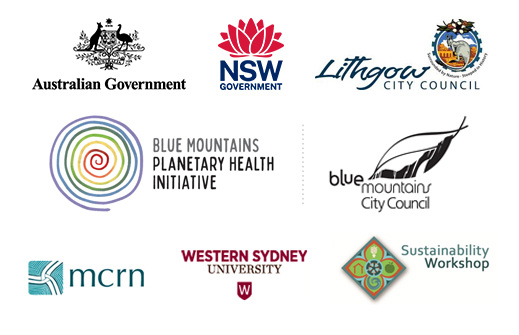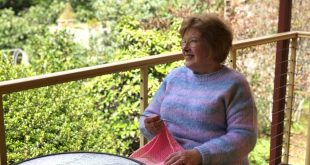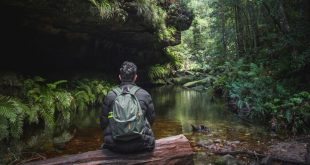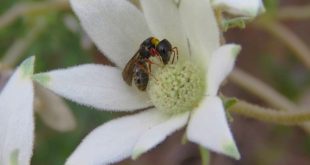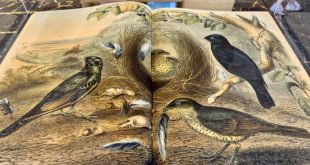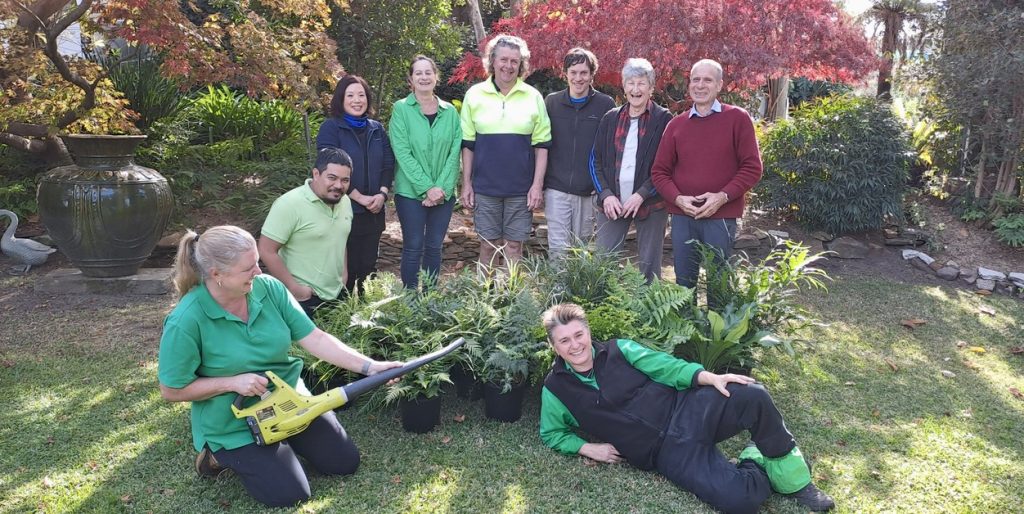
Sonters Nursery team members: Heather Pembroke and Ingrid Rutkowski (front), Floyd Tagudin (middle) Cathy Luong, Sue Fryer, Bruce Newton, Brendon Martirena, Lyn McFadyen and Mr David Sonter (Back). (Hamish Dunlop)
By Hamish Dunlop
Hamish Dunlop visits Sonters Fern Nursery in Winmalee. David Sonter tells him how the 2013 Winmalee fire destroyed the nursery and spore bank. He explains that recovery would not have been possible without the dedication of his staff, assistance from the community and the support of his customers.
It was October 17th 2013. Heather Pembroke was down at the potting shed with Megan Street. They’d just finished a big production run when leaves started falling from the sky. Seeing their burning edges, Heather knew something was wrong. They sheltered at Oasis Horticulture with other staff until they could safely be escorted out.
Heather rang David later that day to find out how things were at the nursery. All he could say was “It’s gone. It’s all gone. Don’t come in tomorrow.” Heather was gutted. Where were they going to go from here? This question reflects how close knit the Sonter Nursery community is. David rang the day after and asked if she could return. He wanted to see what spores could be saved. Heather rang Lin Fadyen and together they started to collect the few spore-covered leaves that hadn’t been incinerated.
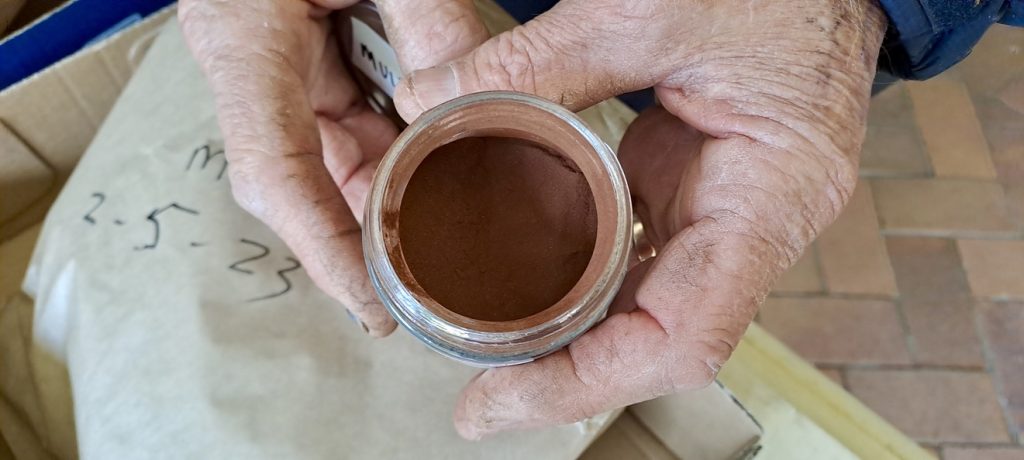
David holding millions of spores. (Hamish Dunlop)
David received various phone calls the day after the catastrophe. One was from Bunnings, one of his biggest customers. His eyes go glassy as he recalls what happened. “The guy from Bunnings rang and asked how we were getting on. He said they had staff from across Western Sydney ready to come straight away to help with the clean-up. It wasn’t something we could take up at the time, but the offer was priceless.”
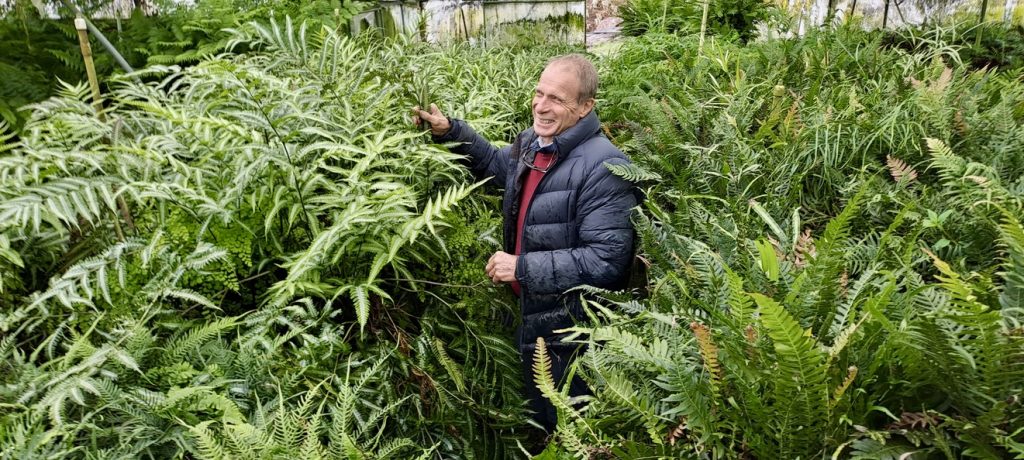
David amongst the ferns. (Hamish Dunlop)
There was serious time pressure when it came to propagating the spores. “If you don’t have a good Spring, you’ve lost the year” David says. He tells me the community helped rebuild the spore bank as well. The team would see ferns in people’s front gardens. They would knock on the door and explain what had happened. Everyone was happy to help by contributing a few fronds. These were then dried until the spores could be shaken loose. Other nurseries helped as well, but the Blue Mountains community played an important role in getting the nursery back on its feet.
Rebuilding
In the aftermath of the fire, David contacted Bruce Newton who had previously worked at the nursery. He asked if Bruce would come back and help rebuild. Bruce says it was unbelievably surreal to see the nursery after the fire. The first job was to try and save the few remaining ferns. Irrigation was the biggest issue. All the underground pipes were melted and there was no time to dig trenches. Heather tells me that solving the problem was a team effort. “The pipes had to be installed over the roads. We were all there securing ladders and handling tools and materials and the boys were up the ladder poking temporary irrigation pipes through the top of trees.”
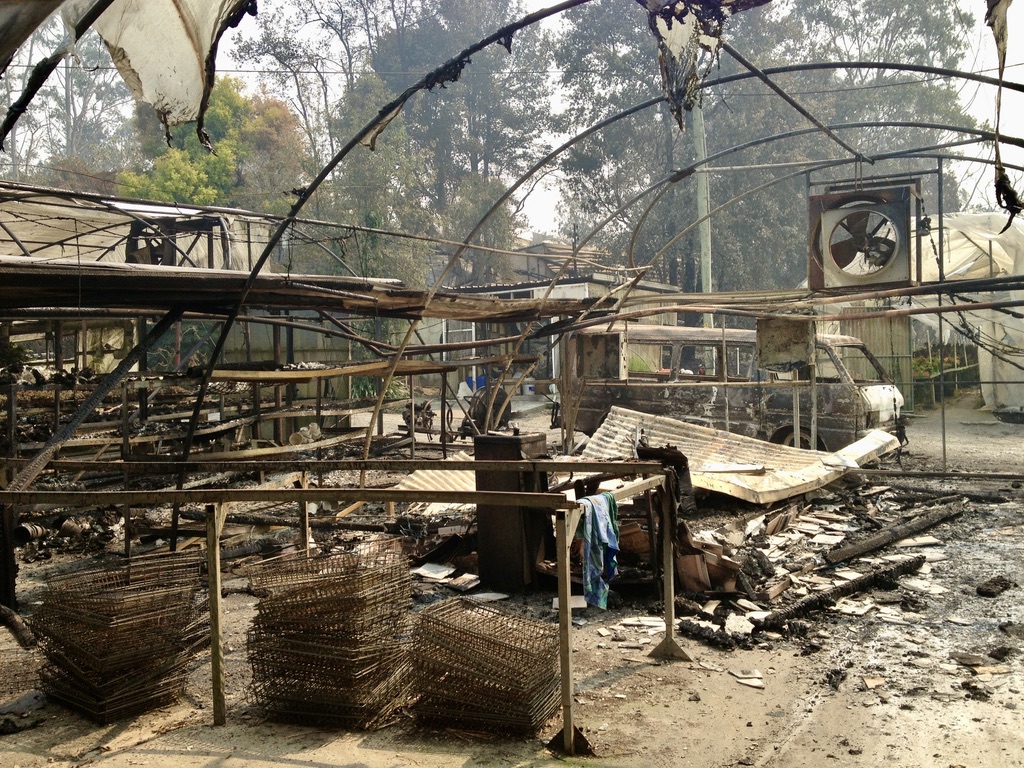
After the fire. (Heather Pembroke)
Re-skinning the greenhouses was a mammoth task. The half-circle igloos are 50m long and 3m wide. Bruce says the first job was scraping all the burnt plastic off the metal frames. In some cases, the frames themselves needed to be replaced. The igloos are skinned longways. Lin says, “You have this 3m wide roll of plastic sheet, a bit like very thick clingfilm. It takes four people to lift it. As it’s unrolled, it opens to about 20m wide. It then gets pulled over the igloo frames with people helping from underneath.”
David says the energy and dedication of the staff enabled the nursery to rise from the ashes. All come from the lower and mid Mountains and some have worked at the nursery for a long time. For Lin, it’s almost 30 years. She explains, “The Sonters are good people to work for. When I started, it was David’s parents, Val and George. In their and David’s book, it’s always family first.” Heather continues, “Family and health. David is approachable too. We can ring him anytime.” She laughs and says the only time he doesn’t liked to be called is when he’s in Western Australia at one of the other nurseries. “When it’s our 6am, it’s his 3am!”
Insurance
After the fire, David and his wife Jo spent six weeks putting together their insurance claim. He says they were given the advice to supply as much supporting material as possible. “CGU [Insurance] has been great. They worked out quickly that we were committed to rebuilding and weren’t under-insured.” In the process of filling the claim, Aldi and Bunnings provided evidence of pre-orders and an ongoing commitment to the nursery.
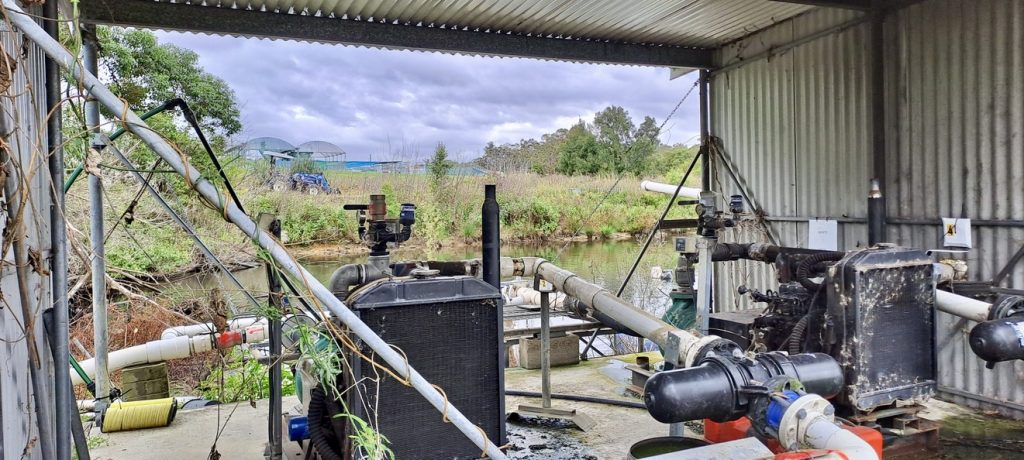
Diesel pumps next to the dam. (Hamish Dunlop)
CGU has helped with future proofing the business too. This means that David’s post-fire insurance premium is lower than it’s even been. The nursery had fire-fighting capacity, but it was focused on the northwest direction. The Winmalee fire came up from the southwest. The dam, diesel generators and sprinkler systems now cover the whole nursery. With the dam at 70% they have 36 hours of protection. David points out the sprinklers deployed above the cluster of igloos. “When they’re on, it’s like a tropical storm – it’s more protected than ever before.”
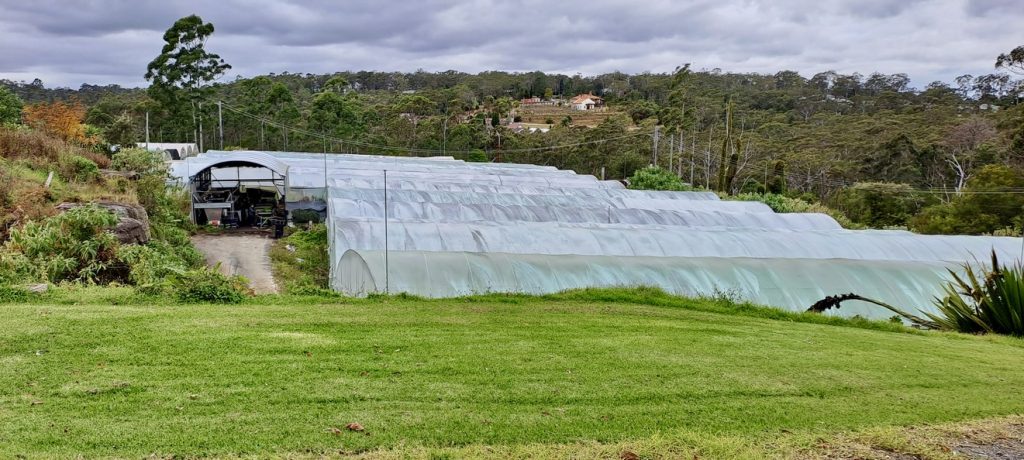
Fern igloos with sprinkler poles. (Hamish Dunlop)
Ferns from the ashes
I’m chatting with Bruce, Heather and Lin on David’s porch. Lin says it just doesn’t seem that long ago. “The memories are still so vivid.” They share various signs of fire that remain today, small encounters that bring the memories back. Bruce talks about bits of burnt piping he runs into occasionally. Lin says she sometimes comes across a pot that looks normal on one side, but is melted on the other. “Are you still finding those!” Heather says. “I’m still finding them too.”
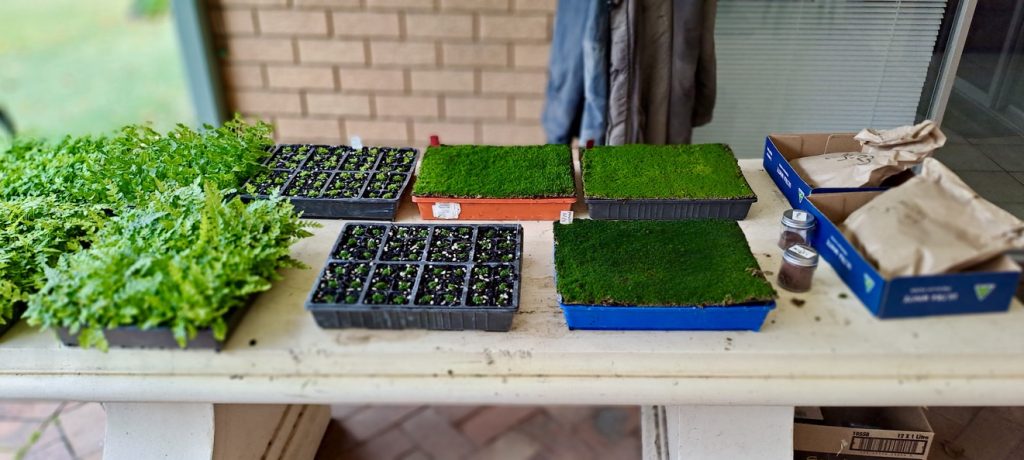
From left: Developing ferns, clusters of ferns transferred into trays, propagation trays, jars of spores and paper bags of dried fronds. (Hamish Dunlop)
David has laid out examples of the stages of fern propagation. He tells me ferns are old, appearing first in the fossil record around 360 million years ago. To put this into perspective, flowering plants that now dominate the world of flora start to be seen around 145 million years ago. David says ferns are incredibly resilient. I ask about fire and he says they’re not heat resistant. “It’s their system of spreading genetic code on the wind, water and on the bodies of animals and insects. This enables them to find ecological niches where they can flourish.”
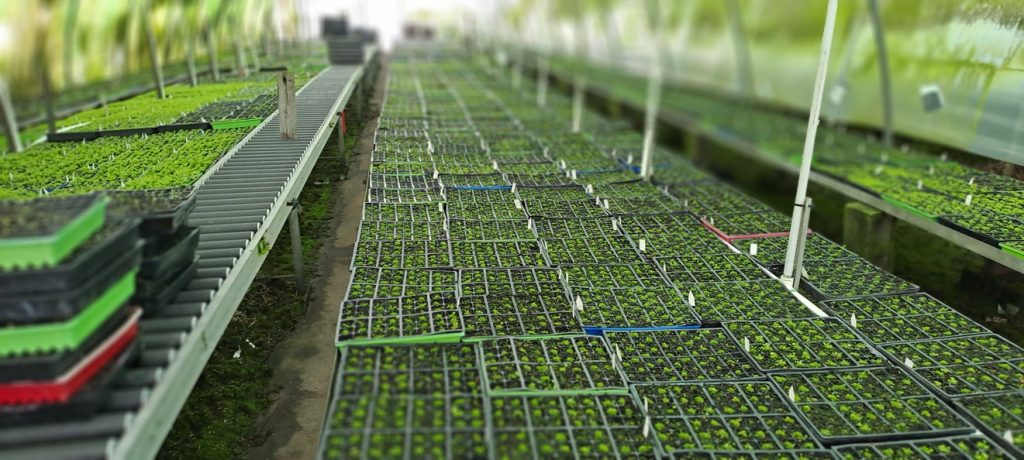
Inside one of the nursery igloos. (Hamish Dunlop)
David tells me the most challenging part of growing ferns is the initial propagation. He says his dad developed a process unique to Sonters Nursery, allowing them to facilitate en masse germination of fern spores and fertilisation of fern prothalli. Clusters of tiny ferns are then tweezed into growing trays. As these develop, they are transferred into successively larger pots depending on what product they are to be sold as.
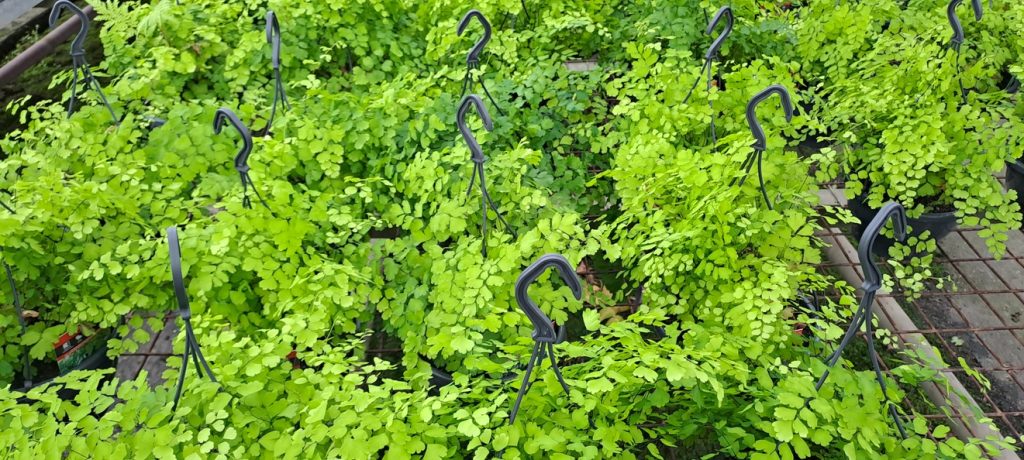
Baskets of Maidenhair ferns ready for the consumer market. (Hamish Dunlop)
The ferns grown by Sonters are sold at Bunnings and Aldi. They are also distributed to garden centres and florists by Oasis Horticulture located across the road from the nursery in Winmalee. The Blue Mountains City Council buys local species of ferns such as Doodia aspera, Blechnum cartilagineum and Blechnum nudum as part of bush regeneration and landscaping activities. Local contractors such as the Bush Doctor are supplied by Sonters as well.
Ethel May
Ferns run in the family. David’s parents Val and George ran the nursery before he and his wife Jo took over. He recalls memories of many late nights packing ferns into transportation trucks. Before Val and George, was Ethel May, David’s grandmother. Ethel lived in Galston, on Sydney’s outskirts. She had a huge fern house, covered with woven tea tree branches for shade. David tells me that at the end of her life she asked her son, David’s father, “Georgie, do you think you could look after my ferns?” This was the beginning of the family’s relationship with Polypodiopsida, the unique class of vascular plants we know as ferns.
It is difficult for us to comprehend the deep time out of which ferns evolved. If you were to take a jar of spores, each single cell would represent something comparable to a human lifetime. But our lives and what we do with our time, is not something to be underestimated. For three generations, the Sonters and their family of employees have cared for and helped propagate ferns. David says that people are the heart of the business, but I think there is a symbiotic relationship here. A quiet entwining of human and plant lives that continues to lead to mutual flourishing.
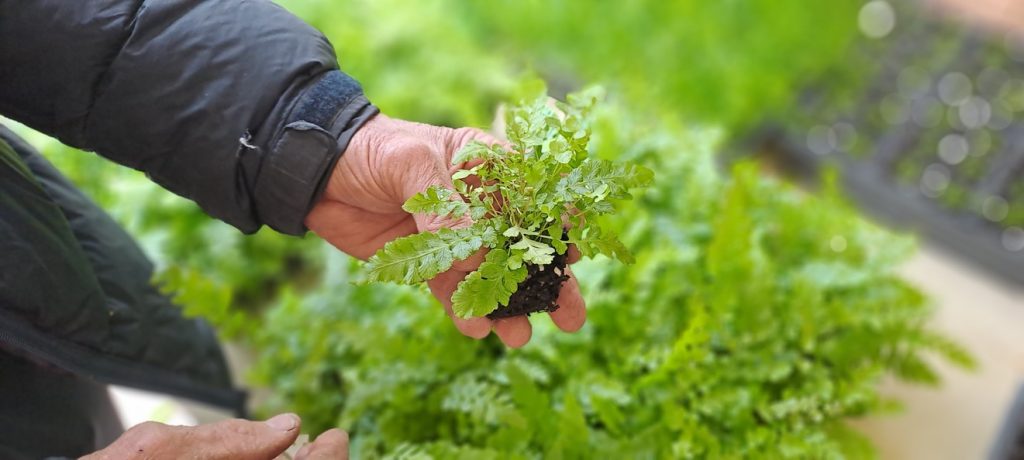
Living in symbiosis. (Hamish Dunlop)
This story has been produced as part of a Bioregional Collaboration for Planetary Health and is supported by the Disaster Risk Reduction Fund (DRRF). The DRRF is jointly funded by the Australian and New South Wales governments.
